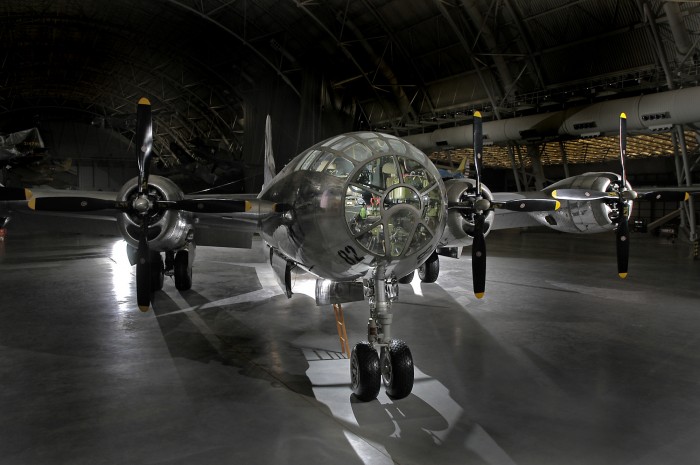Today in Smithsonian History: June 28, 1995

The Enola Gay on display at the National Air and Space Museum. This exhibition, coinciding with the 50th anniversary of the end of World War II, told the story of the role of the Enola Gay in securing Japanese surrender. It contained several major components of the Enola Gay, the B-29 bomber used in the atomic mission that destroyed Hiroshima, Japan. A video presentation about the Enola Gay’s mission included interviews with the crew before and after the mission including mission pilot Col. Paul Tibbets. The exhibition text summarized the history and development of the Boeing B-29 fleet used in bombing raids against Japan. Another portion of the exhibit detailed the painstaking efforts of Smithsonian aircraft restoration specialists who had spent more than a decade restoring parts of the Enola Gay for this exhibition. The fully assembled Enola Gay went on permanent display at the National Air and Space Museum’s Steven F. Udvar-Hazy Center in December 2003.
June 28, 1995 After several years of controversy regarding its presentation and description, an exhibition opens at the National Air and Space Museum displaying the Enola Gay, the B-29 aircraft that dropped the atomic bomb on Hiroshima, Japan on August 6, 1945.
This exhibition, coinciding with the 50th anniversary of the end of World War II, told the story of the role of the Enola Gay in securing Japanese surrender. It contained several major components of the Enola Gay, the B-29 bomber used in the atomic mission that destroyed Hiroshima, Japan. The components on display included two engines, the vertical stabilizer, an aileron, propellers, and the forward fuselage that contains the bomb bay.
A video presentation about the Enola Gay’s mission included interviews with the crew before and after the mission including mission pilot Col. Paul Tibbets. The exhibition text summarized the history and development of the Boeing B-29 fleet used in bombing raids against Japan.
Another portion of the exhibit detailed the painstaking efforts of Smithsonian aircraft restoration specialists who had spent more than a decade restoring parts of the Enola Gay for this exhibition. Museum specialists continued to restore the remaining components of the airplane, and after an additional nine years the fully assembled Enola Gay went on permanent display at the National Air and Space Museum’s Steven F. Udvar-Hazy Center in December 2003.

Boeing’s B-29 Superfortress was the most sophisticated propeller-driven bomber of World War II and the first bomber to house its crew in pressurized compartments. Although designed to fight in the European theater, the B-29 found its niche on the other side of the globe. In the Pacific, B-29s delivered a variety of aerial weapons: conventional bombs, incendiary bombs, mines, and two nuclear weapons.
On August 6, 1945, this Martin-built B-29-45-MO dropped the first atomic weapon used in combat on Hiroshima, Japan. Three days later, Bockscar (on display at the U.S. Air Force Museum near Dayton, Ohio) dropped a second atomic bomb on Nagasaki, Japan. Enola Gay flew as the advance weather reconnaissance aircraft that day. A third B-29, The Great Artiste, flew as an observation aircraft on both missions.
Courtesy of Smithsonian Institution Archives
Posted: 28 June 2019
- Categories:








